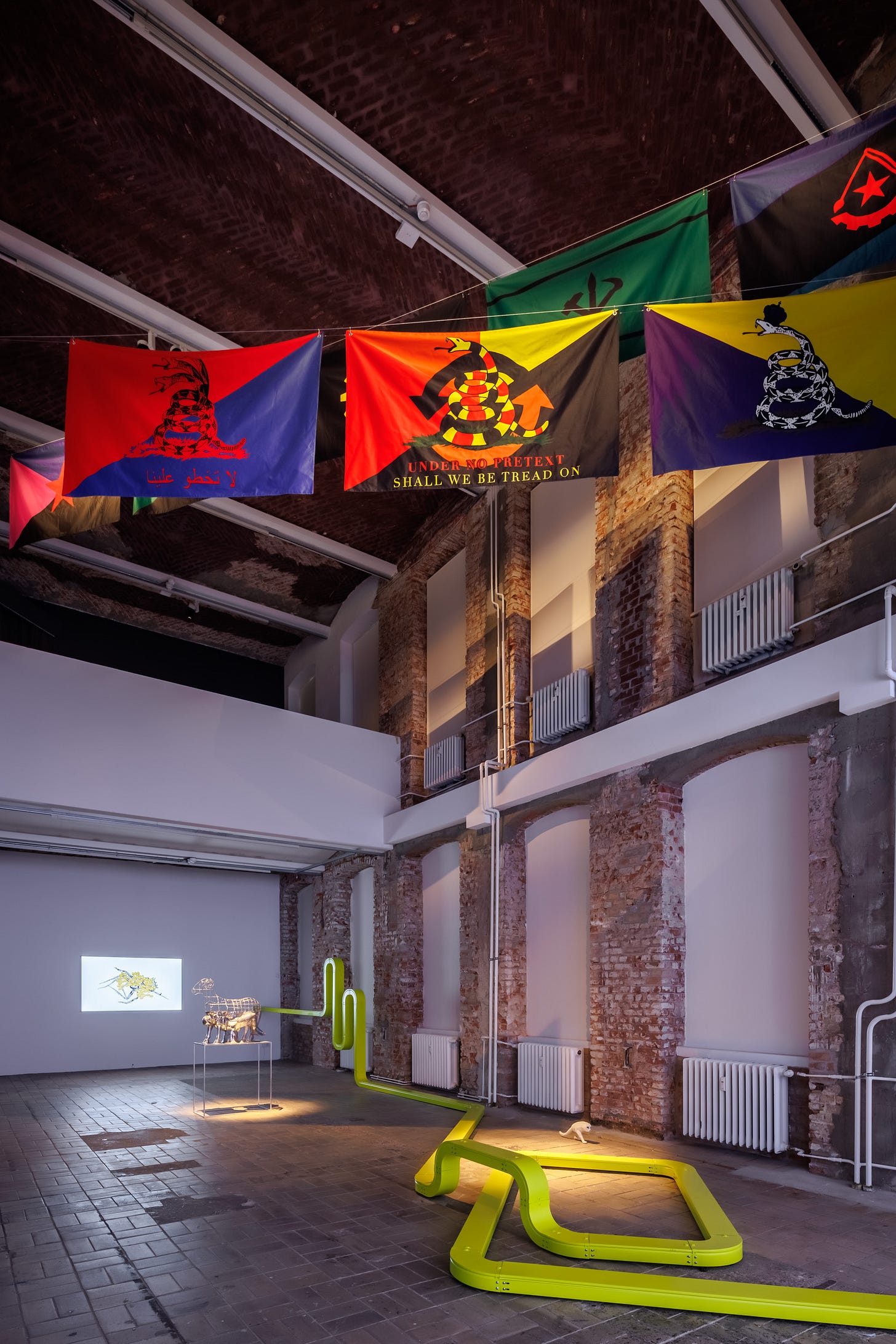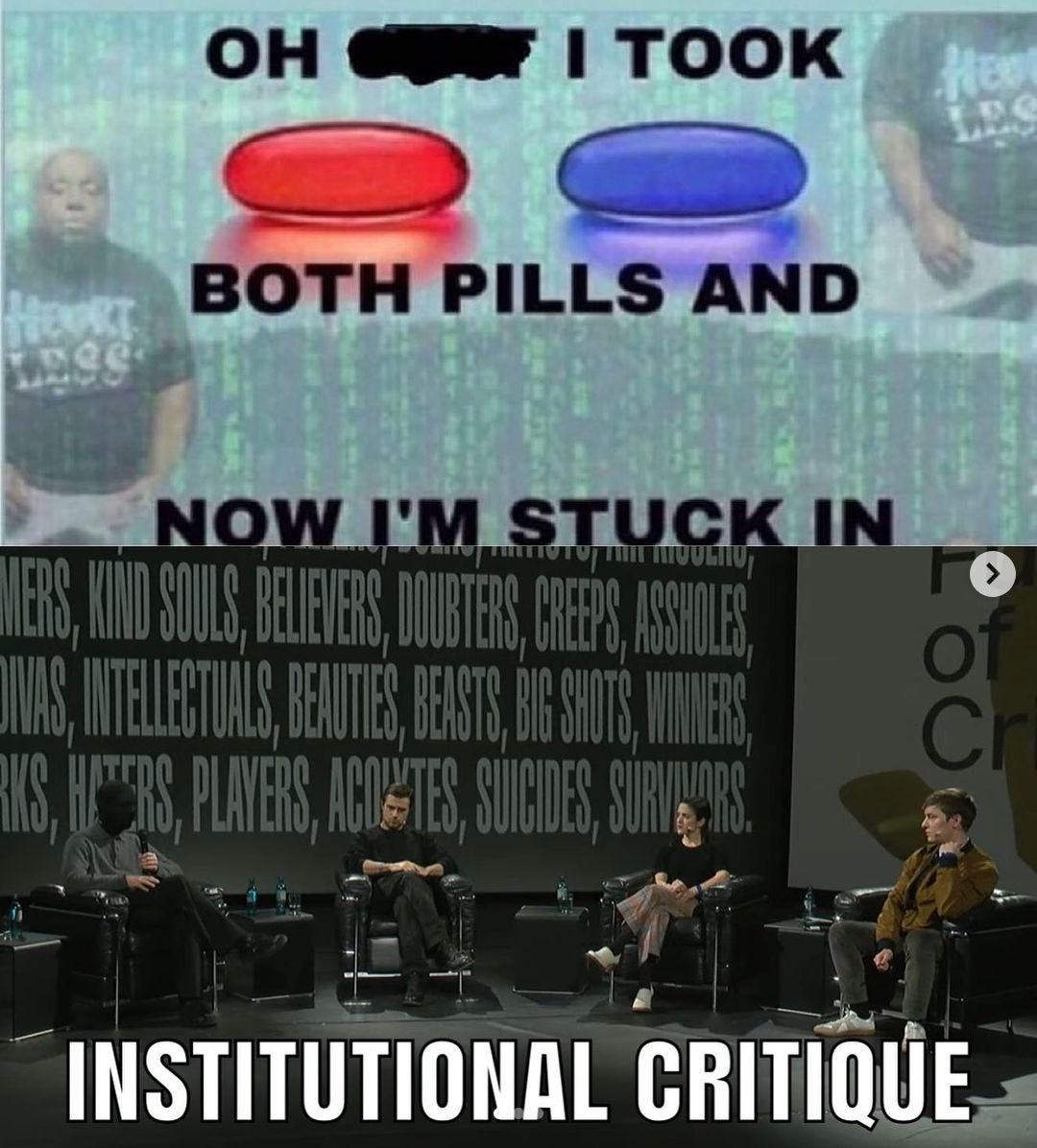Doomscroll is available in audio form on Apple Podcasts, Spotify and everywhere else.
This week, I spoke with
for her Substack page, , about why young voters are shifting to the right. If you’ve been following the recent developments in alt-media, The Young Turks has made strides towards building a cross-party populist audience. Ana is one of the most interesting voices in the alt-media space right now. You can find the episode here:On YouTube, I stopped by The Moynihan Report to discuss some similar themes. Michael Moynihan is a host of
, a good humored, libertarian-ish podcast (if they don’t mind me using that label). We’re from different sides of the political spectrum but judging from the comments their audience seems to have responded well. You can watch the episode here: Joshua Citarella on Gen Z, Political Memes, and Right Wing Counterculture | The Moynihan Report.
It feels funny to say this now — for most of my adult professional life, I have primarily been known as an artist. Contemporary art (in the US and internationally) is a relatively small field. Today, more people are familiar with my commentary and writing about online politics.
However, the knowledge and media theory that I now apply to online politics is something that I learned from the Art world. I’ve taught media theory in MFA programs and I’ve been showing work in galleries and museums for over a decade. Last year, I participated in exhibitions at: KW Institute for Contemporary Art, in Berlin, Germany; Kunstal Charlottenborg, in Copenhagen, Denmark; Galerie Rudolfinum, in Prague; Czech Republic, Institute of Modern Art, in Brisbane, Australia and many others.
A thorough analysis of art and culture necessarily reveals the class relations, underlying economies and deeply held values of a society. Art is simulataneously the most and least ideological space within society. For all of its baggage, it can be a unique space to incubate novel ideas.
This spring, I embarked on a project with my good friend
. (You may know him as the author of The Dark Forest Theory of the Internet.) Yancey’s work has inspired much of my thinking and writing on new institutional forms, platform economies and the future of online cultures.From February to May of this year, we met weekly to discuss our creative practices and explore the underlying economic models of cultural industries today. You can listen to the full 12 episode mini-series: New Creative Era for free on most platforms and podcast apps; Apple, Spotify, etc.
This week, Yancey and I are also releasing a book which includes an edited transcript of these discussions; On the Creative Life: Conversations Toward a New Creative Era.
Just like how platforms transformed our news and politics, they also remapped our creative economies. Musicians and writers are often the most exploited party on big social media platforms, especially in the case of artists on Spotify. As Yancey said in a recent episode, “Its possible to making a killing but its hard to make a living.”
If you’re a longtime follower of this newsletter, I recommend listening to these episodes in reverse order. If you’re new here, I suggest starting with episode 1 as we build on the core themes with each new installment.
As my good friend Carly Busta of
often cites, “In the 1970’s commissioned writers at the top magazines were paid the equivalent of [adjusted for inflation] $10 per word. Today, its common to get paid $150 for a 1,500 article.” Someone please check my math but I’m pretty sure this is a 99% paycut lol. The removal of gatekeepers and the flood of online content put strong downward pressure on the rates for creative work. Platforms gave all of us a voice but in the process they made us broke and lonely.New Creative Era explores the near future of online culture. These once speculative Dark Forest theories have now begun to take shape. We see them manifest in the form of collaborative group projects, such as
, and other novel publishing formations which Yancey describes as “labels”.If you’re involved in a creative pursuit, online or offline, I think you will enjoy this series: New Creative Era.
If you want to dive deeper into the media theory origins behind my work and analysis of online politics, this episode will help to illuminate these themes. It’s adapted from a previous syllabus that I would teach in MFA lecture courses:
I have a very special returning guest coming up next week on Doomscroll who recently visited MoMA PS1 to give a lecture on the topic of “care”. I’m excited to share it with all of you.










Is that John Enxuto on the panel with you?
You guys are sooo out of touch! Platform this platform that. You guys have clearly not had art jobs in a long time and or felt the economic crush of the sector collapsing. Let alone make meaningful work.